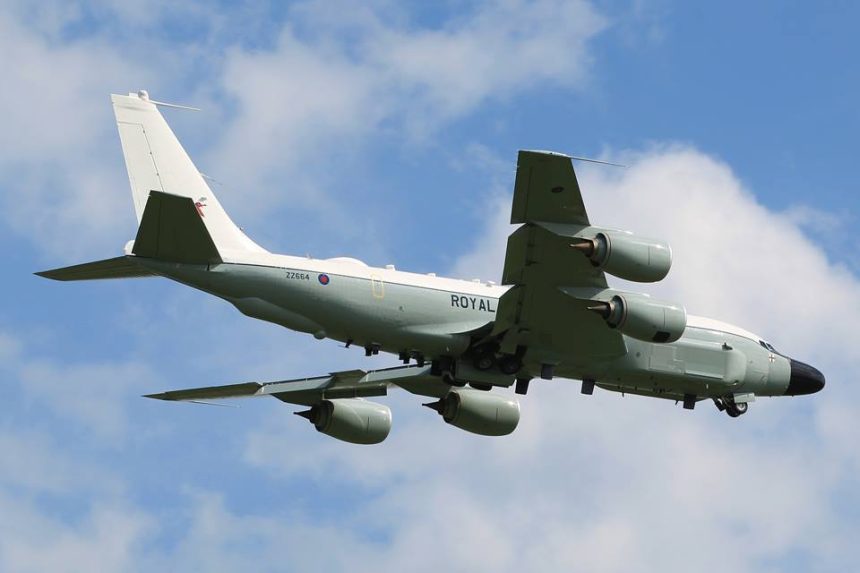One of the three Rivet Joint surveillance aircraft UK is buying from the U.S. as part of the Airseeker program has been flown in UK airspace by an RAF aircrew for the first time.
The RC-135W is one of the most important assets in the U.S. Air Force inventory: it has been used to perform SIGINT (Signal Intelligence) in almost all U.S. missions across the globe and, as we write, an American Rivet Joint out of RAF Mildenhall, in the UK, is probably flying over the Baltic region (as done almost daily in the last couple of months) to collect and relay Russian signals and communications.
Equipped with all sorts of antennae and sensors, the Rivet Joint is capable to eavesdrop enemy transmissions and detect frequencies used by radio and radars: it can pinpoint emissions within a large coverage area and transmit the snooped data via satellite.
Therefore it is a strategic platform that helps the Pentagon to draw the EOB (Electronic Order of Battle) of the enemy prior and during crisis or wars.
The Royal Air Force is going to be the only Rivet Joint operator outside the U.S. Air Force. It will operate three RC-135W surveillance planes, within a project dubbed “Airseeker.”
The three RC-135s come from ex-US Air Force KC-135 tankers, whose conversion by L-3IS in Greenville, Texas, started back in January 2011. The aircraft have been bought directly from the US government at a cost of around £650 million.
Being almost identical to the examples flown by the U.S. Air Force, the British RC-135W are going to be equipped with an air-to-air (AAR) refueling system that will prevent them from taking fuel from RAF tankers.
Indeed, as explained by the UK’s MoD: “The modification fro KC to RC standard has entailed removal of the air-to-air refueling boom delivery system and embodiment of an AAR receiver system above the cockpit.”
Since no refueling probe was designed for the British RC-135W (unlike what done for the E-3Ds, to make them capable to refuel from RAF’s tankers), Rivet Joints will only be able to refuel from tankers equipped with flying boom, even if UK does not operate that kind of refuelers: RAF’s A330 Voyager tankers are only equipped with the so-called “hose and drogue” system (the U.S. Navy’s standard).
This means that, without the help of the U.S. Air Force or one of the other allied air arms that operate boom-equipped tankers, British RC-135s will be limited to no more than 12 hours of endurance, a bit of a problem considered that persistence in the area of operation for several hours could be required to fulfill a spy mission.
Even though they couldn’t autonomously support their own missions, RAF could find some help from other allies: U.S. with KC-135 and KC-10s; Italy with its KC-767A; Australia, Saudi Arabia and UAE, with their Airbus 330 MRTTs equipped with flying booms; along with France, Israel and few others that operate boom-equipped tanker based on the B707.
Furthermore, it must not be forgotten that European NATO countries (still much dependent on Washington when it deals with capabilities required to sustain air campaigns) are performing “collective activities,” sharing the most important assets (including tankers) to optimize resources in light of the ever shrinking Defense budgets.
British Rivet Joint may take advantage of NATO’s “sharing and pooling” concept for what concerns tankers.
Image credit: Crown Copyright

















